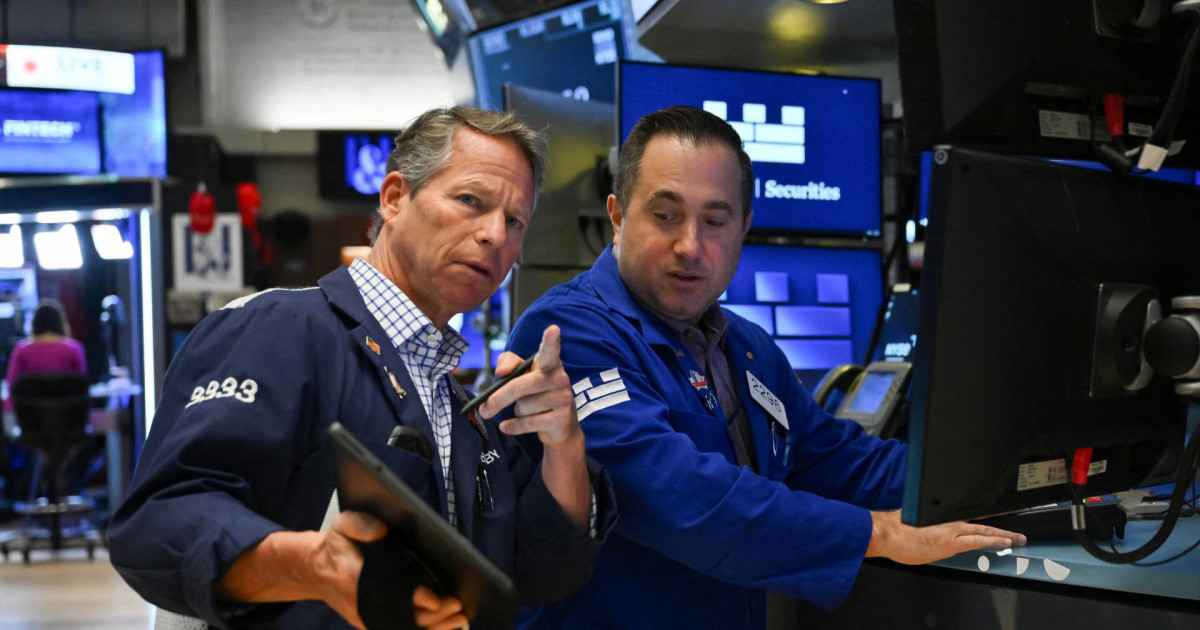Copyright The Street

The S&P 500 has experienced a meteoric rise to all-time highs since spring. Still, gains have been harder to come by lately, as economic worries have increased amid the shutdown in Washington, D.C. While hurdles to reopening Washington’s wallet remain, a decision by eight democratic U.S. Senators to vote to end the shutdown, breaking the filibuster, has reinvigorated many stocks, causing the S&P 500 and Nasdaq Composite to rally on Nov. 10. 8 Senate Democrats voted to end the shutdown: Dick Durbin of Illinois. John Fetterman of Pennsylvania. Jeanne Shaheen of New Hampshire. Maggie Hassan of New Hampshire. Tim Kaine of Virginia. Angus King of Maine. Catherine Cortez Masto of Nevada. Jacky Rosen of Nevada. The shutdown has weighed heavily on the minds of Americans. Last week, the University of Michigan’s consumer sentiment survey index tumbled to its second-lowest reading since 1978, primarily due to concerns that an extended shutdown’s negative impact on Federal workers and low-income spending could derail the economy. “With the federal government shutdown dragging on for over a month, consumers are now expressing worries about potential negative consequences for the economy,” wrote University of Michigan economists. Emerging cracks in the labor market haven’t helped matters. Layoffs were the highest for October since 2003, when the economy was struggling with the Internet bust. Of course, the reopening of the government won’t solve all the problems facing the economy, and the main reason behind the shutdown remains unaddressed. What was behind the government shutdown Republicans have long aimed to dismantle the Affordable Care Act, or Obamacare, including during President Donald Trump’s first term. In 2017, legislation to repeal the ACA was proposed by the House of Representatives (American Health Care Act) and separately by the Senate (Better Care Reconciliation Act). In those cases, the bills failed to pass Congress. Still, President Trump made several moves designed to make ACA plans less appealing, including: Cutting federal funding for organizations that help people enroll in health plans. Reducing ACA advertising budgets. Ending federal cost-sharing reduction (CSR) subsidy payments to insurers that reduced out-of-pocket costs for low-income members. Shortening the open enrollment period to 45 days from 90 days. Eliminating the ACA’s individual mandate penalty, reducing it to $0. At the heart of the current shutdown in 2025 are post-COVID subsidies that lower costs for households enrolling in ACA plans that were earning over 400% of the Federal Poverty Level. The Kaiser Family Foundation, or KFF, a non-profit focused on healthcare, credits those subsidies for helping to increase ACA membership to 24 million Americans. The subsidies expire on Dec. 31, and since an extension wasn’t included in the appropriations legislation for the 2026 fiscal year, Democrats voted against the budget. According to KFF, insurance “premium payments in 2026 will more than double if ACA enhanced premium tax credits expire.” The decision to shut down the government by failing to pass a spending bill had widespread consequences, as only certain payments could be made without Congressional approval of a budget. Many workers, such as those in law enforcement and the active military, are required to work without pay during a shutdown. However, most federal workers are furloughed, and payments for key services, such as the USDA’s Supplemental Nutrition Assistance Program (SNAP), were impacted. Stocks rally as Congress reaches deal It’s been a tale of two stock markets in 2025. The S&P 500 tumbled 19% from its February highs to its April low because of higher-than-expected proposed tariffs. A pause in implementing tariffs on April 9 to allow for trade negotiations, however, sparked a rally that has continued since then, lifting the S&P 500 by about 35% and the technology-heavy Nasdaq Composite by over 54%. More Wall Street: Veteran fund manager sees quiet fuel for next AI rally The 60/40 portfolio is back for a surprising reason Top analyst calls ‘kick in the pants’ for S&P 500 However, in the wake of the government shutdown and amid the potential economic impact of delaying payments to workers and programs, the S&P 500 and Nasdaq Composite retreated 2.5% and about 4% from their late October highs through last week. Stocks reacted positively to the news that the impasse in Washington could soon be resolved, with the S&P 500 and Nasdaq Composite rising 1.5% and 2.3%, respectively. “With the Senate advancing a plan to end the longest U.S. government shutdown in what is being called a bipartisan breakthrough, we are putting some of that capital back to work,” wrote veteran fund manager Chris Vesace in a post on TheStreet Pro. “The agreement still needs to pass the House before the government can be reopened, but we are seeing what can be called a “sigh of relief” rebound in the market.” The gains provided relief for investors who had been growing increasingly anxious due to the stock market’s lackluster breadth. Last week, the number of stocks hitting 52-week lows exceeded the number of stocks reaching 52-week highs, triggering the ominous-sounding Hindenburg Omen technical signal. What caused the shutdown’s breaking point Democrats held the line, voting against the budget since Oct. 1 in hopes of forcing Republicans to extend ACA subsidies. However, as time passed and the reality of how a lack of funding could negatively impact American households, particularly lower-income earners and Federal workers, including air traffic controllers, took hold, some Democrats decided it was better to allow the budget to pass and address the issue of ACA subsidies separately. As a result, eight U.S. Senators voted to end the shutdown, including Pennsylvania Sen. John Fetterman, who had already voted with Republicans a dozen previous times to end the shutdown due to the potential impact on SNAP and other benefit programs. “I voted AYE to extend ACA tax credits because I support them—but I won’t vote for the chaos of shuttering our government,” said Fetterman on Sept. 30. Senator Catherine Cortez Masto of Nevada was also a long-time advocate for ending the shutdown, alongside Fetterman, voting 15 times in tandem with Republicans. “I have consistently voted against shutting down the government because I know the pain it is causing working families, from TSA agents to government contractors. We must extend the ACA enhanced premium tax credits, but that can’t come at the expense of the millions of Americans across our country impacted by a shutdown,” said Cortez Masto on Nov. 9. In exchange for their votes, Republicans agreed to hold a separate vote by the end of December on whether to continue or repeal ACA subsidies. A final vote on the updated continuing resolution in the Senate is expected soon. The House of Representatives will then need to vote, and the President will have to sign the legislation before the shutdown officially comes to an end.



